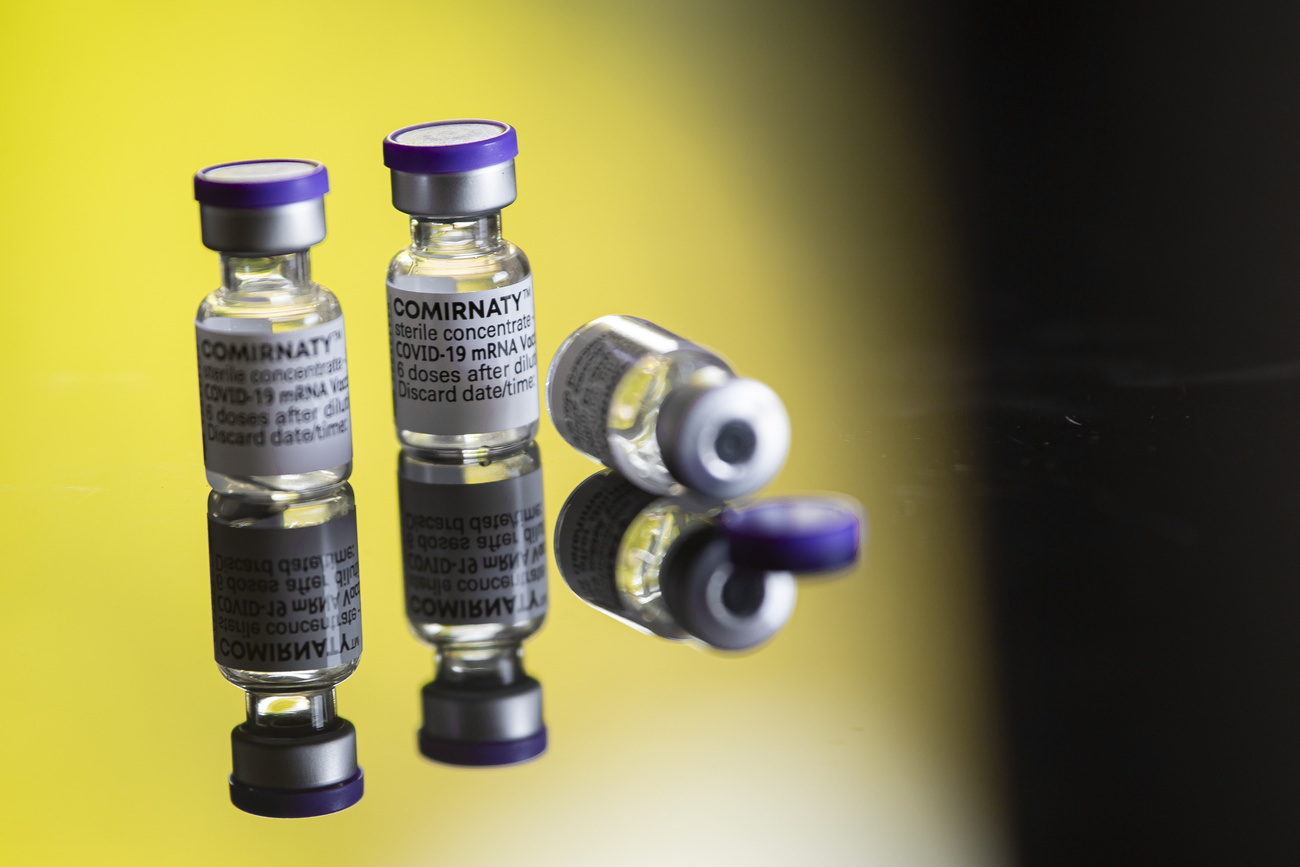
Scientists uncover Omicron variant mysteries using microscopes

Researchers at the Swiss Federal Technology Institute in Lausanne (EFPL) have used high-performance electron microscopes to examine the spike protein of the Omicron Covid-19 variant for a better understanding of why it is resistant to certain Covid vaccines.
Scientists at the Dubochet Center for ImagingExternal link at the EPFL produced an image of the original virus’ spike protein with a resolution of 2Å – the highest ever achieved – that allowed them to look at individual atoms.

“We can now see exactly which mutations allow the Omicron variant to resist the AstraZeneca vaccine completely and the Pfizer vaccine partially,” said physics professor Henning Stahlberg in a statement.
The Center’s electron microscopes are among the most powerful in the world. The high-resolution images could help scientists to better understand how the mutant spike protein binds to the ACE2 cellular receptors, which is what allows the virus to enter human cells. This knowledge could then be used to devise new therapies.
The analysis produced by the Center’s researchers, which has not yet been peer-reviewed, was publishedExternal link this week on an open-access platform, so other researchers can use it for their own investigations into how the fast-spreading variant reacts to existing drugs.

In compliance with the JTI standards
More: SWI swissinfo.ch certified by the Journalism Trust Initiative

























You can find an overview of ongoing debates with our journalists here . Please join us!
If you want to start a conversation about a topic raised in this article or want to report factual errors, email us at english@swissinfo.ch.